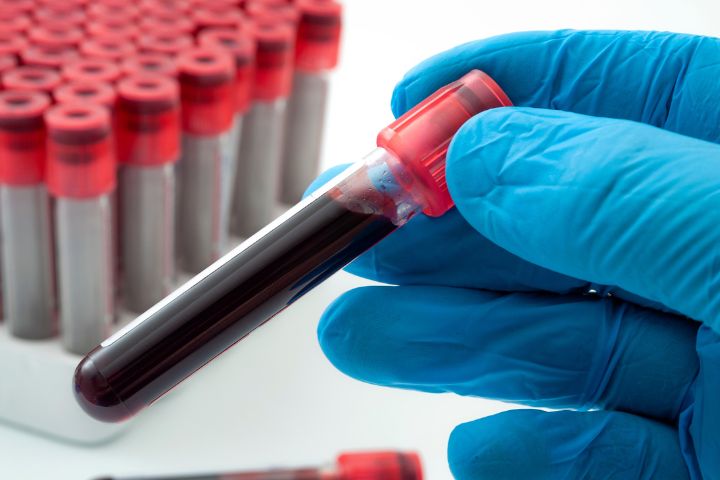The Buzz on Northeast Medical Institute - New Haven Campus Phlebotomy Course & Cna Class
The Buzz on Northeast Medical Institute - New Haven Campus Phlebotomy Course & Cna Class
Blog Article
Rumored Buzz on Northeast Medical Institute - New Haven Campus Phlebotomy Course & Cna Class
Table of ContentsThe Ultimate Guide To Northeast Medical Institute - New Haven Campus Phlebotomy Course & Cna ClassSee This Report about Northeast Medical Institute - New Haven Campus Phlebotomy Course & Cna ClassOur Northeast Medical Institute - New Haven Campus Phlebotomy Course & Cna Class DiariesHow Northeast Medical Institute - New Haven Campus Phlebotomy Course & Cna Class can Save You Time, Stress, and Money.6 Simple Techniques For Northeast Medical Institute - New Haven Campus Phlebotomy Course & Cna ClassSome Known Details About Northeast Medical Institute - New Haven Campus Phlebotomy Course & Cna Class
Nonetheless, the usage of such gadgets ought to be accompanied by other infection avoidance and control methods, and training in their use. Not all safety tools apply to phlebotomy. Before selecting a safety-engineered device, customers ought to thoroughly explore readily available gadgets to establish their ideal use, compatibility with existing phlebotomy practices, and efficiency in safeguarding staff and people (12, 33).For settings with low sources, cost is a motoring aspect in purchase of safety-engineered devices. Where safety-engineered gadgets are not available, knowledgeable use of a needle and syringe is acceptable.
Among the essential markers of quality of care in phlebotomy is the involvement and collaboration of the individual; this is mutually useful to both the health worker and the client. Clear info either composed or verbal ought to be offered to every client who undergoes phlebotomy. Annex F offers sample message for discussing the blood-sampling treatment to a client. In the blood-sampling space for an outpatient department or facility, offer a comfortable reclining sofa with an arm remainder.
Our Northeast Medical Institute - New Haven Campus Phlebotomy Course & Cna Class Ideas
Ensure that the indications for blood tasting are plainly defined, either in a written protocol or in recorded instructions (e.g. in a lab form). Whatsoever times, adhere to the techniques for infection avoidance and control listed in Table 2.2. Infection prevention and control methods. Accumulate all the equipment needed for the treatment and place it within safe and simple reach on a tray or cart, guaranteeing that all the things are plainly visible.
Where the person is adult and conscious, follow the steps described below. Introduce yourself to the individual, and ask the individual to mention their complete name. Examine that the research laboratory kind matches the person's identification (i.e. match the person's information with the research laboratory kind, to make certain exact identification). Ask whether the license has allergies, phobias or has ever before collapsed throughout previous shots or blood attracts.
Make the client comfortable in a supine placement (if possible). The patient has a right to decline a test at any kind of time before the blood tasting, so it is essential to ensure that the person has image source recognized the procedure - CNA Courses.
Northeast Medical Institute - New Haven Campus Phlebotomy Course & Cna Class for Beginners
Expand the patient's arm and check the antecubital fossa or lower arm. Locate a blood vessel of an excellent size that shows up, straight and clear. The layout in Area 2.3, reveals usual positions of the vessels, but numerous variants are feasible. The typical cubital vein lies between muscles and is typically the most simple to pierce.
DO NOT place the needle where capillaries are diverting, because this increases the chance of a haematoma. Situating the blood vessel will certainly help in determining the correct dimension of needle.
Samplings from central lines lug a risk of contamination or wrong laboratory test results. It is acceptable, but not excellent, to draw blood samplings when first presenting an in-dwelling venous tool, before linking the cannula to the intravenous liquids.
Some Known Details About Northeast Medical Institute - New Haven Campus Phlebotomy Course & Cna Class
Failing to enable sufficient get in touch with time enhances the risk of contamination. DO NOT touch the cleaned site; in certain, DO NOT put a finger over the blood vessel to lead the shaft of the subjected needle.
Ask the individual to form a clenched fist so the capillaries are much more famous. Get in the vein quickly at a 30 degree angle or less, and remain to present the needle along the capillary at the most convenient angle of access - PCT Courses. As soon as sufficient blood has been gathered, release the tourniquet prior to taking out the needle
Some Known Details About Northeast Medical Institute - New Haven Campus Phlebotomy Course & Cna Class
Withdraw the needle carefully and apply mild stress to the website with a tidy gauze or completely dry cotton-wool ball. Ask the individual to hold the gauze or cotton wool in position, with the arm expanded and elevated. Ask the person NOT to flex the arm, because doing so creates a haematoma.

8 Simple Techniques For Northeast Medical Institute - New Haven Campus Phlebotomy Course & Cna Class
Do not push the syringe plunger since added pressure increases the threat of haemolysis. Where possible, maintain the tubes in a rack and relocate the shelf in the direction of you. Inject downwards into the suitable coloured stopper. DO NOT remove the stopper due to the fact that it will certainly release the vacuum cleaner. If the example tube does not have a rubber stopper, inject very gradually into the tube as reducing the pressure and velocity used to transfer the sampling minimizes the risk of haemolysis.

Report this page